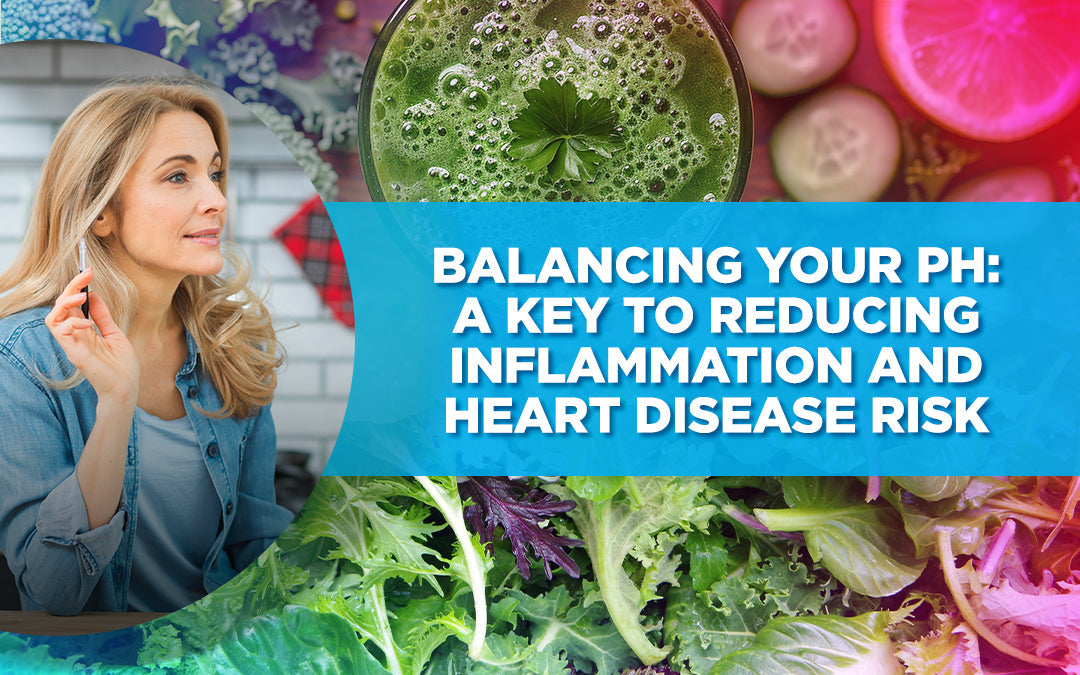Balancing Your pH: A Key to Supporting Normal Inflammatory Responses
Dr. LivingoodShare

Today, we’re diving into a topic that has profound implications for your health: the balance of your body’s pH levels. Specifically, we’ll explore how you can reduce inflammation and lower your heart disease risk by eating alkaline-forming foods.
Why pH Levels Matter
The pH level of your body is a crucial factor that affects your overall health. When your body’s pH is balanced, your risk for heart disease decreases.
Conversely, a low pH (too much acidity) can lead to a host of health problems. A recent study published in “Alternative Therapies in Health and Medicine” highlighted the negative impacts of acidosis (excessive acidity) on the body.

The Role of Age and Diet
Two main factors contribute to acidosis: age and diet. While we can’t control the aging process, we can certainly manage our diet to slow down the progression of acidosis. Many people are in a state of low-grade metabolic acidosis due to constant consumption of acid-producing foods. This chronic acidity can lead to severe health issues, including:
- Bone density loss
- Reduced muscle mass
- Weakened immune system
- Increased tumor growth
- Higher inflammation levels
Benefits of an Alkaline Diet
On the flip side, consuming alkaline-forming foods can mitigate these problems. Research has shown that an alkaline diet can improve bone density, muscle mass, and immune function while reducing tumor growth and inflammation.
Here’s how you can start balancing your pH today with three simple dietary changes.
Boost Your Greens Intake
The first step to a more alkaline diet is to increase your intake of greens. Greens are incredibly alkalizing and can be easily incorporated into your diet.
Smoothies and Juices
One of the easiest ways to consume more greens is through smoothies. Add a handful of spinach, kale, or collard greens to your breakfast smoothie. These greens blend well with fruits and won’t significantly alter the taste.

Salads
For lunch, opt for a salad made with nutrient-dense greens like spinach or kale instead of less nutritious options like romaine. You can also add greens to sandwiches or wraps.

Incorporate Alkaline Fruits
Not all fruits are created equal when it comes to their impact on your pH levels. Some fruits can actually help increase your alkalinity.
Berries
Berries, especially blueberries, are fantastic for detoxification and have an alkalizing effect on the body. They’re also low in sugar, which is important for managing inflammation.
Melons and Citrus
Fruits like honeydew melon and limes are great choices. They are alkaline-forming and can be eaten alone or added to salads and smoothies.
Apples and Grapefruits
Granny Smith apples and grapefruits are other excellent options. They offer a balance of low sugar content and high alkalizing potential.
Add Seeds to Your Diet
Seeds, particularly flaxseeds and chia seeds, are powerful tools for increasing your body’s alkalinity.
Flaxseeds
Flaxseeds are rich in omega-3 fatty acids, which help lower inflammation. You can add them to your morning smoothie or sprinkle them over salads and yogurt.
Chia Seeds
Chia seeds are another excellent source of omega-3s. They can be used in a variety of recipes, including chia seed pudding, which is both delicious and nutritious.

The Bigger Picture
Balancing your body’s pH isn’t just about making isolated dietary changes; it’s about adopting a holistic approach to health. Here are some additional tips to help you maintain a balanced pH:
Stay Hydrated
Drinking plenty of water helps flush out toxins and maintain pH balance. Always keep a reusable water bottle topped up nearby your desk. As well, consider adding a slice of lemon or lime to your water for an added alkaline boost.
Reduce Processed Foods
Processed foods are typically acid-forming and can contribute to chronic acidosis. Aim to reduce your intake of processed foods and replace them with whole, nutrient-dense options.
Exercise Regularly
Regular physical activity helps maintain a healthy pH balance by promoting better digestion and circulation. Aim for at least 30 minutes of moderate exercise most days of the week. One great way to encourage that is by doing bite-sized 10-minute exercises throughout the day!

Conclusion
Maintaining a balanced pH is crucial for reducing inflammation and lowering your risk of heart disease. By incorporating more greens, alkaline fruits, and seeds into your diet, you can take significant steps towards better health.
Remember, small changes can lead to significant change!
Share
Related Articles
Most Popular
-
The 5 Amazing Benefits of Omega-3s
August 13, 2024 -
Healing Your ‘Second Brain’: The Path to a Healthier Gut
August 13, 2024







